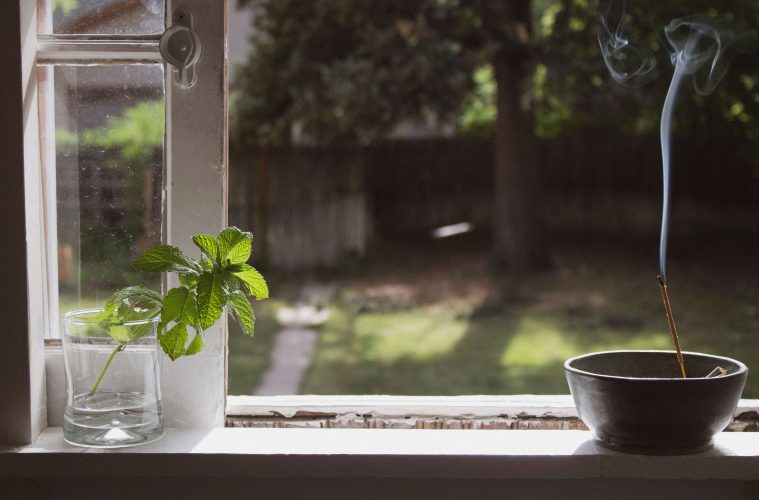Using incense in your home means you’re inviting an entire history of culture, tradition, and aroma into your space. But what are those burning sticks and cones, and what are they each used for? We’ll guide you.
What is incense?
Incense is a substance composed of aromatic plant materials, such as resins, herbs, spices, and woods, that are ignited to release fragrant smoke. This practice dates back thousands of years and is prevalent in religious ceremonies, spiritual rituals, meditation, and in personal spaces as a way to cleanse and reset the space.
The word “incense” finds its roots in the Latin term ‘incendere’ meaning “to burn.”
Incense was originally employed to counteract disagreeable odors and drive away any negative energy, as well as to manifest the presence of the gods (fragrance being a divine attribute) and to gratify them. Now, incense is used openly across the globe, and doesn’t always have spiritual or religious connotations.

Unsplash
Uses of incense
Religious and spiritual practices
Incense holds immense significance in many religious traditions, symbolising purification, prayers, and offerings to deities. The rising smoke is believed to carry prayers and intentions to the divine realm, fostering a connection between the physical and spiritual worlds.
Meditation and mindfulness
The soothing aroma of incense is often used during meditation and mindfulness practices. The gentle fragrance helps create a serene atmosphere, enhancing focus, deepening relaxation, and promoting a sense of inner peace.
Cleansing and purification
The purifying properties of certain incense scents have been cherished across cultures. The smoke is believed to clear negative energy, purify spaces, and create a harmonious environment. Incense is often used during rituals or when moving into a new home to dispel stagnant energies.
Aromatherapy and well-being
Incense is renowned for its therapeutic benefits. Different scents have diverse effects on the mind and body, aiding relaxation, stress relief, and promoting emotional well-being. The captivating fragrances can evoke positive memories, uplift spirits, or induce a sense of calm.

Unsplash
5 captivating incense aromas and what they do
Myrrh Blend
This powerful blend acts as a purifier of negative influences and upholds spirituality. It helps clear the mind and aids in protection during ceremonies with its warm, sweet, nutty scent with a clean finish.
It is used for protection, healing, purification, and spirituality.
Nag Champa
Nag Champa is the most popular incense in the world. It is made from highly fragrant rare gums, resins, powders, and pure Mysore Sandalwood Oil. It is considered to be a sacred incense that provides grounding and concentration. Ideal for meditation, relaxation, and stress and anxiety relief.
Nag Champa has a magnolia-like scent and is sweetened with a touch of honey.
Frankincense
This resinous incense has been treasured for its warming, spicy balsam scent with a light lemony zing. Its purifying symbolism holds a spiritual connection, often used during meditation, prayer, and sacred ceremonies.
Patchouli
Patchouli has the same undertone as the original Nag Champa but with an added kick. It is burned to stimulate spirituality and meditation. Its powerful cleansing aroma will bring balance and clarity creating a calming and sacred atmosphere.
This incense scent exudes a deep, earthy, and musky fragrance. It is often used to enhance mood, alleviate anxiety, and promote a sense of balance and sensuality.
White sage
White sage has long been used to eliminate negative energy and purify sacred spaces and ritual tools. It promotes wisdom and clarity. It can aid in the healing of the body, mind, and soul. Use white sage to enhance concentration, creativity, and intuition.
Article originally written and published by Amy Steenkamp for Woman&Home.
Feature image: Unsplash

